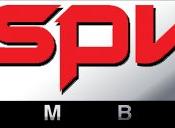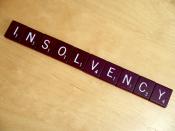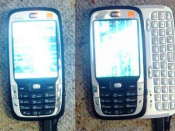Many projects are structured by sponsors using a special purpose vehicle (SPV). The SPV will undertake and carry out the project on behalf of the sponsors. In a number of cases, the SPV will obtain limited recourse finance needed for the project. It is a popular belief that the use of such an SPV will effectively quarantine the liability exposure of the sponsors to the assets and undertaking of the SPV, including the project. The use of an SPV is said to create a closed circuit of risk1. Contrary to this view, where an SPV is a wholly-owned subsidiary of a sponsor, there nonetheless may be direct liability attaching to the sponsor as the SPV parent company, in the event of insolvency of the SPV. In layman's terms, a sponsor who utilises a wholly-owned SPV may not be able to simply walk away from the project debts and liabilities in the event of insolvency.
There are various methods that creditors can employ in the case of default in order to recoup their debts from the sponsor, as opposed to simply seeking recovery from the SPV, the project's assets and cash flow. Creditors will, however, primarily have to look to the SPV and the project's success as the primary source for repayment. Limited liabilityThis concept lies at the heart of the incorporation of companies and the use of companies as the vehicles for the conduct of businesses and ventures. Generally, shareholders of a company will not be liable for the indebtedness of a company beyond the amount paid up on their shares. However, for companies which have wholly-owned subsidiaries (ie. parent or holding companies), the courts have occasionally allowed creditors of the subsidiary to have direct access to the parent or holding company's balance sheet. Any such liability will only arise upon the insolvency, or likely insolvency, of the subsidiary. Under-resourced subsidiariesA parent or holding company may find itself liable if it has allowed its subsidiary SPV to be under resourced when viewed against its contracted debts and liabilities. These subsidiaries may be regarded by law as a mere agent of the parent, as its parent, or as its partner in the venture. There are, however, various obviating factors. These include a separate and independent board; dedicated personnel separate from the parent; sources of credit other than the parent, and resources independent of the parent and not subject to its control. When considering such liability, there must be ongoing consideration by the company's directors as to whether the company is insolvent, or likely to become insolvent. A company will become insolvent at the time the debt or liability is incurred, or when the debt or liability pushes the company into insolvency. The test for determining whether a company is insolvent is an objective one. The court will ask whether a reasonable person at the time would suspect that the company was insolvent, requiring a positive feeling of apprehension, but without sufficient evidence (Justice Kitto in Queensland Bacon Pty Ltd v Rees (1996) 115 CLR 266 at 303).Liability of a parent or holding companyLiability for an insolvent subsidiary's debts and liabilities may extend to its parent or holding company, under section 588V of the Corporations Law.A parent or holding company can be liable for a debt of the subsidiary, if, at the time the debt is incurred: ç it was the holding company of the company which incurred the debt ç the subsidiary is, or is likely to become insolvent as a consequence of incurring that debt, or others which include that debt ç there were reasonable grounds to suspect the insolvency, and the holding company should have been aware of these. A company will be considered a holding company if it holds more than one half of the subsidiary's shares, controls its board, or controls more than one half of the votes at a general meeting. Liability under this section is in addition to any shadow director liability (discussed below). This is where the company exerts relevant dominance over any one or more individual subsidiary company director(s).A director's obligations and liabilitiesIn the event that a subsidiary SPV becomes insolvent, or it is suspected it may become insolvent, the SPV's directors may also become personally liable for its debts under section 588G of the Corporations Law, if they allow the company to continue to trade.The term directors has been given a wide definition. Under section 60 of the Corporations Law, this definition extends beyond persons appointed as such to include an individual or company (not formally appointed to the position of director), if such person occupies or acts in the position of director (section 60(1)(a)); and/or gives directions or instructions to the directors in accorion of director (section 60(1)(a)); and/or gives directions or instructions to the directors in accordance with which they customarily act (section 60(1)(b)). This could include the parent company of the SPV, which would therefore be liable in effect as a shadow director of the subsidiary SPV.In the case of a director who is no more than a puppet for his or her appointor, the appointor will be deemed to be a director. The individual will still be regarded as a director, however, whilst arguably he or she should be liable, it is still unclear whether the appointed director, together with the puppeteer (which could be the parent or holding company) can both be liable as directors.The Corporations Law does not specifically refer to the occurrence of a company being wound up, but it is implied due to the fact that section 588G falls within legislation governing corporations after winding up has begun.Defences available to directorsA director who is believed to have allowed a company that is insolvent or is suspected of becoming insolvent, to continue to trade, may try to rely on one of four defences available to him or her under section 588H of the Corporations Law.The defences are available where the Director: ç had reasonable grounds to expect the company was solvent at the time the debt was incurred, or would remain solvent, even if the debt was incurred ç had reasonable grounds to believe a competent and reliable person was responsible for, and was providing the director with adequate information about whether the company was solvent, and on the basis of this, the director expected the company was solvent and would remain so even if debt was incurred ç because of illness or good reason, was not taking part in management of the company when the debt was incurred ç took all reasonable steps to prevent the company incurring debt. Civil, criminal and personal liabilityIn addition to any liability discussed above, directors may also be subjected to a civil penalty, or in the case of dishonest conduct, a criminal penalty, under section 588G of the Corporations Law. A director may also have a personal liability to the company for any damage or loss caused by the company's insolvency.ConclusionWhilst the use of an SPV is now seen as standard in project structures, it may not always have the liability limitation consequences desired by the sponsors.






